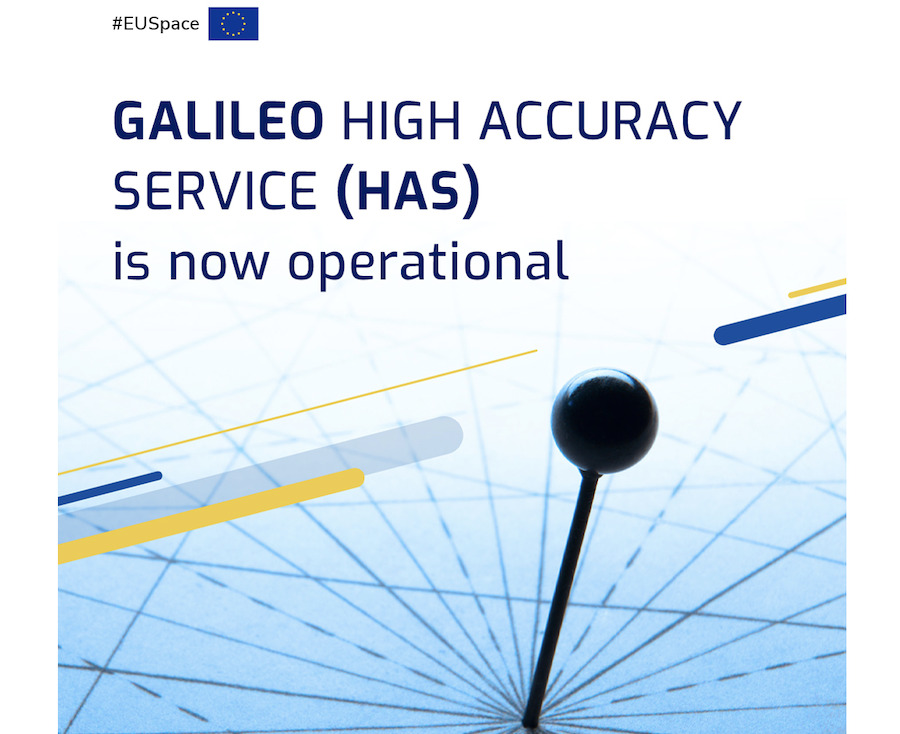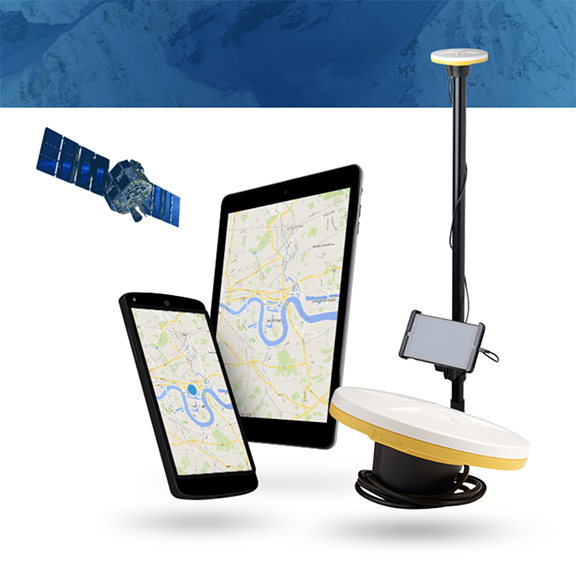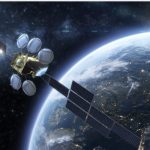The Galileo High Accuracy Service (HAS) is officially available, becoming the first GNSS to offer free precise point positioning (PPP) corrections worldwide via both the Galileo signal in space (E6-B) and the internet. The announcement was made Tuesday during the 2023 European Space Conference in Brussels, Belgium.
The EU agency for the Space Programme (EUSPA), the European Commission (EC) and the European Space Agency (ESA) developed and tested Galileo HAS, which is expected to become a pillar for emerging applications that require precise, dependable position information such as autonomous vehicles, unmanned aircraft systems (UAS) and precision agriculture.
HAS increases accuracy by up to 10 times compared to the open service, making it an innovative service that can make a difference in adoption, EUSPA Executive Director Rodrigo da Costa said during a livestream of the announcement.
“Declaring the service today is the conclusion of a lot of work that got us to the initial service declaration, but at the same time, it’s the start of a lot of work that we have ahead of us,” he said, “because of course not only will the service continue to evolve, but in particular right now the focus will be to get this service adopted by those who can make best use of it.”
The European Union (EU) satellite now offers users sub-meter accuracy across most of the globe. Typical accuracy is below a few decimeters (<25cm horizontal) in nominal conditions. Such precise corrections will improve accuracy associated with the orbit, clocks and biases provided through the Galileo Open Service broadcast navigation messages and GPS Standard Positioning Service navigation data. High accuracy positioning is available in real-time when processed in receivers designed to track the Galileo E6-B signal.
Getting to HAS
When Galileo was first developed, it was not designed for high accuracy service, Paul Flament of the EC said. Safety of life service was never implemented and that freed up capacity, making it possible to develop HAS years later—opening up a “new world” of applications and possibilities for innovation.
In 2018, the decision was made to provide Galileo HAS for free, offering what the EC’s Ignacio Fernandez-Hernandez described as a novel, first of its kind service that’s operated 24/7 with a minimal performance level guaranteed.
“This is an important day for us, for Galileo,” said Fernandez-Hernandez, who is responsible for Galileo high accuracy and authentication services for the EC. “It’s been about 10 years since we started conceptualizing the Galileo High Accuracy Service and the declaration today is a very important event.”
Meeting a Need
HAS will be provided through the existing Galileo infrastructure, without disrupting existing elements, Ignaciao Fernandez-Hernandez said. While other PPP services use hundreds of stations to achieve accuracy, HAS uses 14. Once corrections are produced, they’re sent to the ground control center and uplink stations and then transmitted in seconds.
HAS fills a gap, Fernandez-Hernandez said, while not intruding on other available services.
“HAS is part of an ecosystem that has its place but is not replacing other services,” Fernandez-Hernandez said. “We’re following the natural trend of increasing accuracy that started decades ago and is a trend that will continue over the next decades. Providers hesitant before because they feared HAS was a competitor already have plans to use the service to improve their own service when corrections aren’t available.”
What’s Next
The HAS level of performance and coverage will be incrementally increased over the next few years, EUSPA Galileo Commercial and High Accuracy Service Manager. F. Javier da Blas said, allowing for even more possibilities across a broad range of applications and user communities.
The goal is to achieve full global coverage by incorporating more stations into the infrastructure and to increase performance by adding new functions such as ionospheric corrections that will enable faster positioning in Europe.
Realizing the Vision
The team behind Galileo generated something that didn’t exist in record time, from conceptualization to implementation to now offering the service, ESA Director of Navigation Javier Benedicto said, an important accomplishment for Europe.
“This vision of the high accuracy service is really showing the way, I think Europe is showing the way for satellite navigation around the world,” Benedicto said. “We are the envy of all the other operators around the world.”
Read more about Galileo, its infrastructure and recent performance results in the January/February issue of Inside GNSS.






